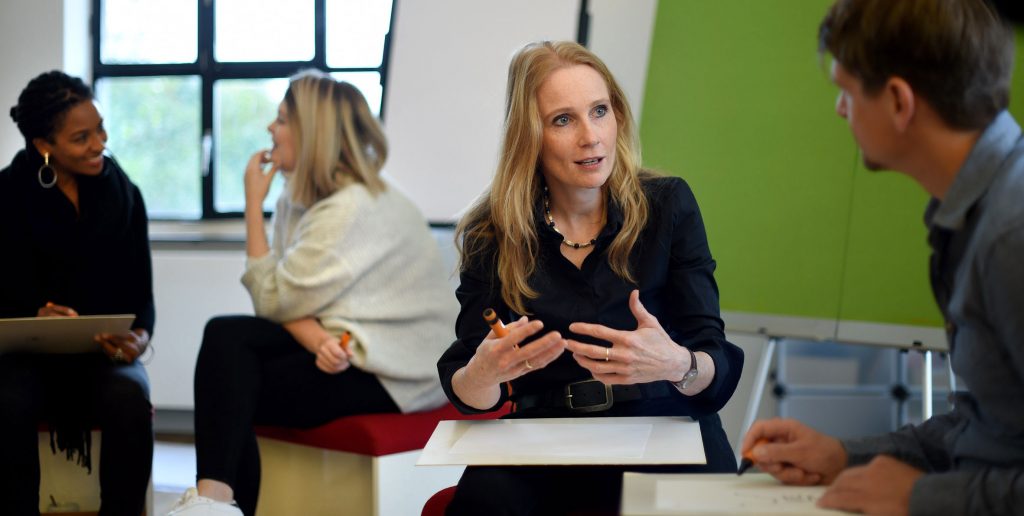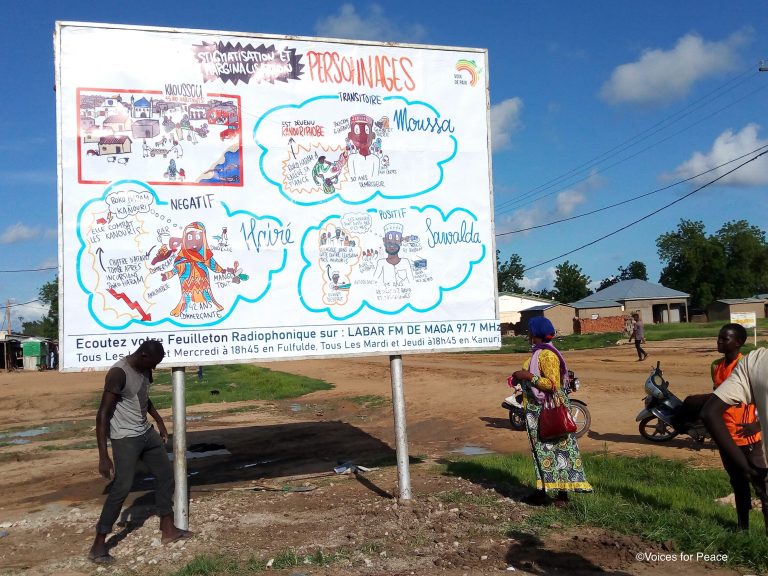Visual Coaching (Online)
Bikablo akademie is launching a new training called “ Visual Coaching”. This training is available in two different formats. Visual Coaching is offered as an elective module as part of the Visual Facilitator curriculum and as a stand-alone three-part Visual Coaching online program.
What is visual coaching? What makes working with hand-drawn images successful in personal process coaching? And what is the difference between the two new Visual Coaching offers? We asked coaches/trainers Annegret Garschagen, Heidrun Künzel and Kirsten Reinhold to share their perspectives.
by Susann Figueredo Hechavarria
SHARE ARTICLE
Annegret, Kirsten and Heidrun – all three of you are trainers at bikablo akademie, but you have also been coaching people who want to (re)define and achieve their goals for years. What role does visualization play in your work?
Annegret: A huge role, I would almost say. Years ago, when an entrepreneur I coached was in a crisis situation. They said to me, “Your picture saved me through the last few weeks! I’ve been looking at it every day,” it hit me like a ton of bricks how valuable visualizations are that arise from individuals in their unique situations in the coaching process. Since then, I have been working intensively on the ways in which I can incorporate visualization into coaching.
Kirsten: Heidrun and I felt the same way. So we decided together, (a year and a half ago), we wanted to share this knowledge in a special bikablo training. Since then, we have been planning, designing and piloting these programs and have developed many new approaches.
Are there specific methods in the “classic” repertoire of a coach that are more effective when they incorporate visualization?
Heidrun: Most methods already have a certain form of visualization. Often we work with cards, figures, positions, models or similar tools. The effectiveness of visualization with the bikablo technique is mainly that we become flexible, diverse and unique. We can use classic methods such as the “inner team” or a goal picture very individually, but we can also think in a completely new way. One of our favorites has become the method “We ask to table!”, which we have developed and tested ourselves. Here, the coachee describes their situation about a decision they need to make using the image of a table party: Who is present? Who is sitting where? What is the attitude? Who says what? How loudly? And so on. Sketching out these details helps promote depth in the discussion, which is very helpful in the coaching process.
Annegret: But we can also simply pick up on visual metaphors of the coachees, eg “I feel like I’m on a hamster wheel”. Hearing this figure of speech makes it possible to develop a drawing together with the coachee. This allows us to quickly reach a deeper level in the conversation. Through the drawn image, the coachee comes much more quickly into their own power and to their own solutions. A highly individualized coaching methodology emerges ad hoc from the conversation, which cannot be found in any textbook.

What do you have to watch out for when you use the language of drawing as a coach? Are there also moments when visualization is counterproductive?
Kirsten: It is important in coaching that the coachee is absolutely in focus. The sense of when we offer which form of visualization is crucial for success. We must always offer the work with images openly and not run over the coachee with it.
Heidrun: It becomes counterproductive when we override an intense mental or emotional moment with methodical actionism. However, this applies to all coaching methods.
Annegret: A central question is of course: Who is drawing? We also put the pen in the coachee’s hand. Here we have to draw a clear line between “use of visualization in coaching” and “art therapy”. However, this is clearly evident in our form of application. It is part of the professionalism of every coach to see and maintain these boundaries.
You have developed two new training formats – “Visual Coaching” as a two-day face-to-face training and “Visual Online Coaching” in a virtual training room over three half days. In short: The same concept in two different “media”?
Heidrun: Not at all! Working with visualization in the virtual space is different! Of course, there are success factors that are the same in face-to-face coaching and in online coaching. However, many methodical approaches are only possible to a limited extent in online coaching. Thus, visualization gains in importance. The technical implementation and the framework are also different. This leads us to think differently methodologically. For example, we can adapt methods that we classically use in face-to-face coaching and for which we need the “physical” space by using visualization so that they also work in the virtual space. How we think in these transformation processes and how we implement that is the topic in the Visual Online Coaching training.
Kirsten: The two trainings take a look at different aspects and coaching methods. There is definitely no boredom if someone attends both trainings.
That all sounds very exciting! How can I tell that the face-to-face training – or the online training – is the right one for me? And what prior knowledge do I need to have in each case?
Annegret: In both trainings we start directly with the visual application possibilities in the coaching process. This also means that we require experience as a coach as well as initial visualization skills with the bikablo technique. Optimally, our participants have attended a coaching training (or comparable consulting training), coaching practice and a bikablo basics course.
Kirsten: With the challenges in the Corona times, even more coaches have moved into online formats and are looking for techniques and inspiration. I always tell interested parties: read through the training description on our website. If that appeals to you, we’d love to meet you in person – whether on-site or online!
MORE ARTICLES ON THIS TOPIC
You Might Also Be Interested In...

Using pictures to promote a good climate: bikablo meets Fridays For Future
With “Fridays for Future” a fascinating worldwide youth movement has emerged. bikablo supported the summer congress in Dortmund with graphic recording and visualization trainings.

Closer than we thought: Visualization and Comics
What do graphic novels and graphic recording have in common? This is the question bikablo asked itself in a conversation with the comic artist Oliver Scheibler at the Comic Festival in Cologne. An experience report with surprising insights.

How to create an educational radio soap with a pencil
Interview with visualizer Filippo Buzzini of ‘Sketchy Solutions’, who helped us with a project in West Africa.